The Society of the War of 1812 in the Commonwealth of Pennsylvania has an ongoing project to assemble photos and descriptions of all of the monuments and historical markers relating to the War that are found across the state. Our listing includes markers and monuments that the Society has placed and, in some cases, restored, as well as markers placed by the United States Daughters of 1812, the Pennsylvania Historical and Museum Commission, and other organizations.
We are always looking for additions to our listing. Photos, descriptions, and locations of monuments and markerers can be sent emailed to: pa.society.1812@gmail.com
Many thanks for your assistance and participation!
*** *** *** ***
Lancaster, Pennsylvania
– The Soldiers and Sailors Monument, Penn Square: The Soldiers and Sailors Monument is a 43-foot tall Gothic Revival memorial which stands in Penn Square in downtown Lancaster, Pennsylvania. It was dedicated on July 4, 1874, at its present site on the Northeast intersection of King and Queen Streets. The Monument features a plaque honoring War of 1812 on the base of the monument near its northwest corner.
Address: Penn Square (Northeast corner of the intersection of King and Queen Streets), Lancaster, PA 17603
Opened: July 4, 1874
Hours: Open 24 hours, in a public space
Architectural style: Gothic Revival architecture
Added to National Register of Historic Places: April 2, 1973
National Register of Historic Places Reference Number: 73001635
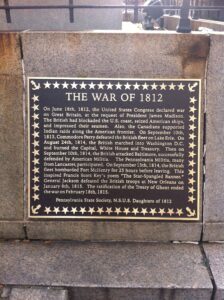
Lancaster, Pennsylvania
– Governor Simon Snyder Historical Marker: This marker placed by the Pennsylvania Historical and Museum Commission at 245 Queen Street in downtown Lancaster commemorates Governor Simon Snyder (November 5, 1759 – November 9, 1819) who was the third Governor of the Commonwealth of Pennsylvania, serving three terms from 1808 to 1817. He led the state through the War of 1812 and among governors was one of the strongest supports of the War with Great Britain.
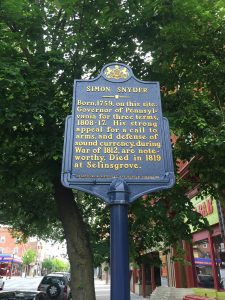
Lancaster, Pennsylvania
– President James Buchanan Historical Marker, Penn Square: This marker placed by the Pennsylvania Historical and Museum Commission at the Southwest corner of Penn Square (the Southwest corner of the intersection of King and Queen Streets in downtown Lancaster) commemorates James Buchanan, 15th President of the United States, and veteran of the War of 1812.
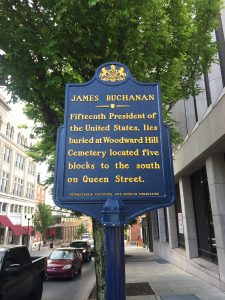
Lancaster, Pennsylvania
– President James Buchanan Grave, Woodlands Cemetery: The grave of James Buchanan, 15th President of the United States, is located in Woodward Cemetery, a few blocks south of central downtown Lancaster. Although an opponent of the War of 1812, Buchanan recognized his duty to defend his nation, state, and county and enlisted as a private in the 1st Brigade, 4th Division of the Pennsylvania militia — a unit of the Lancaster County Light Dragoons commanded by Henry Shippen – following the British invasion of Maryland in 1814. The gravesite, featuring a stone sarcophogus surrounded by a small landscaped garden with a flagpole and flag, has markers placed by the Society of the War of 1812, the United Stated Daughters of 1812, and the Masons.
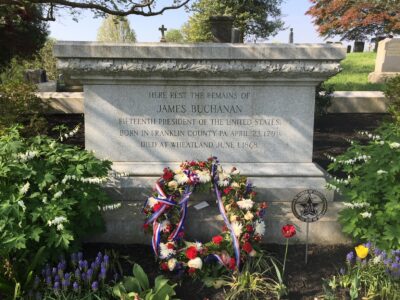
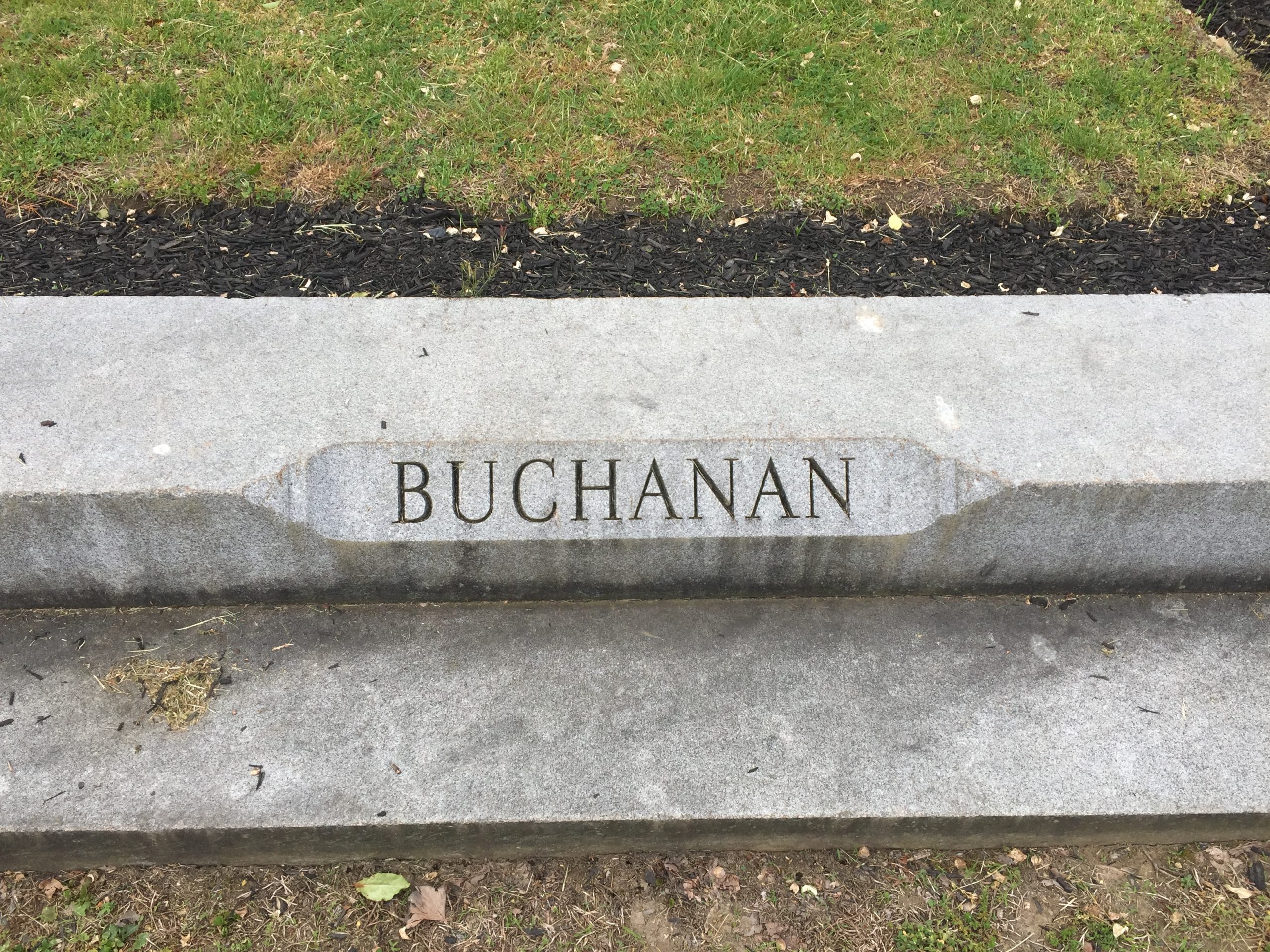
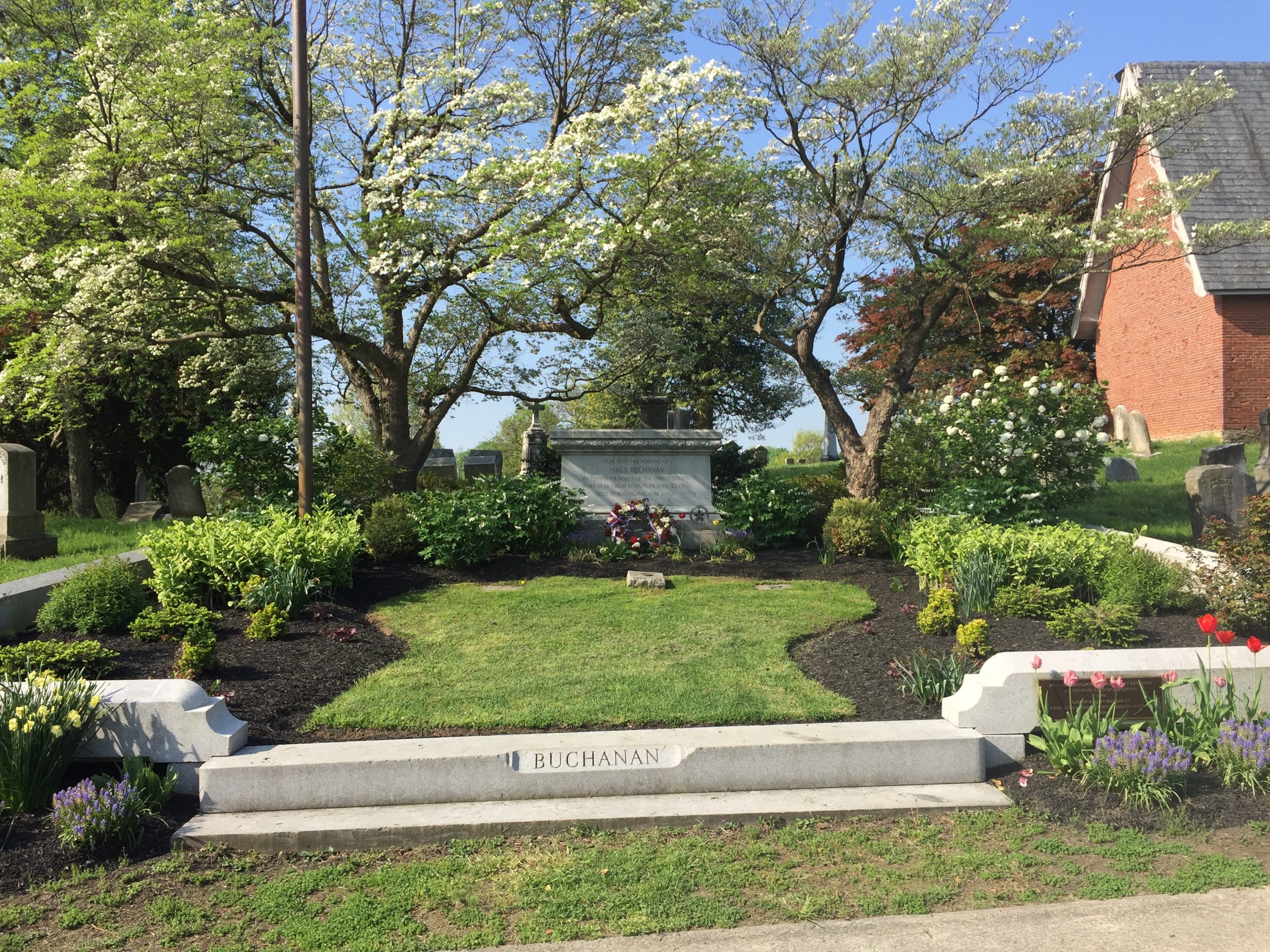
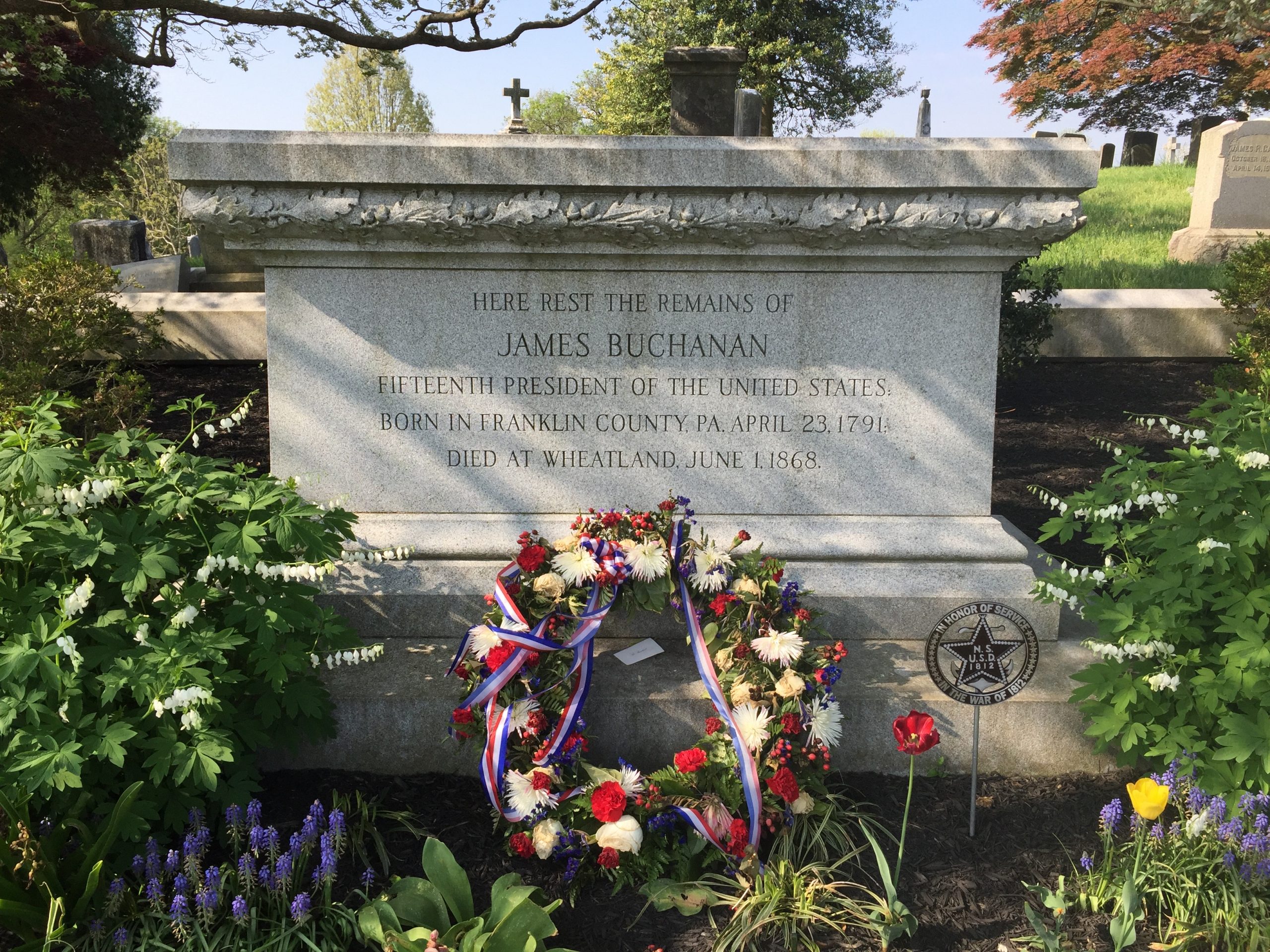
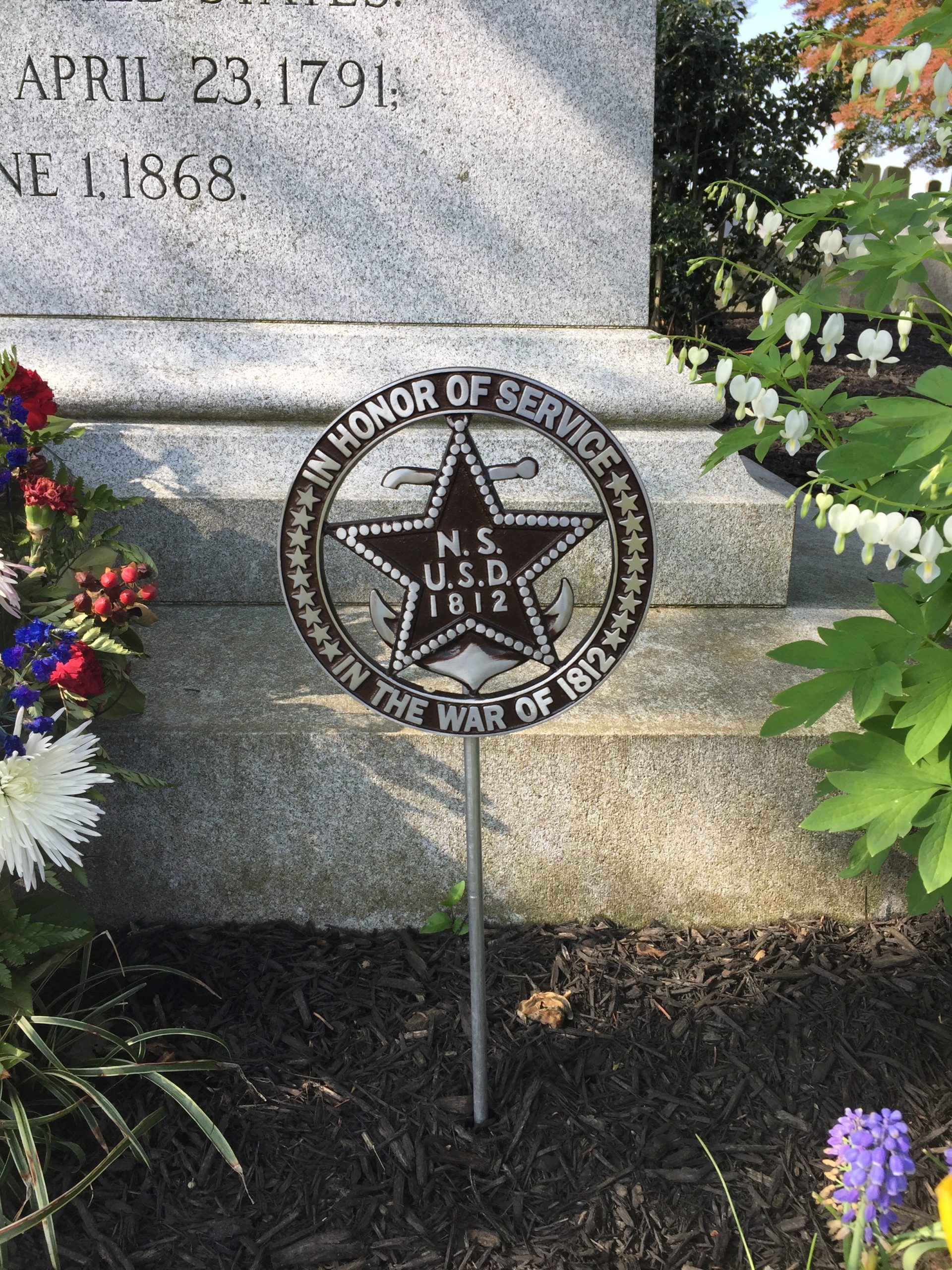
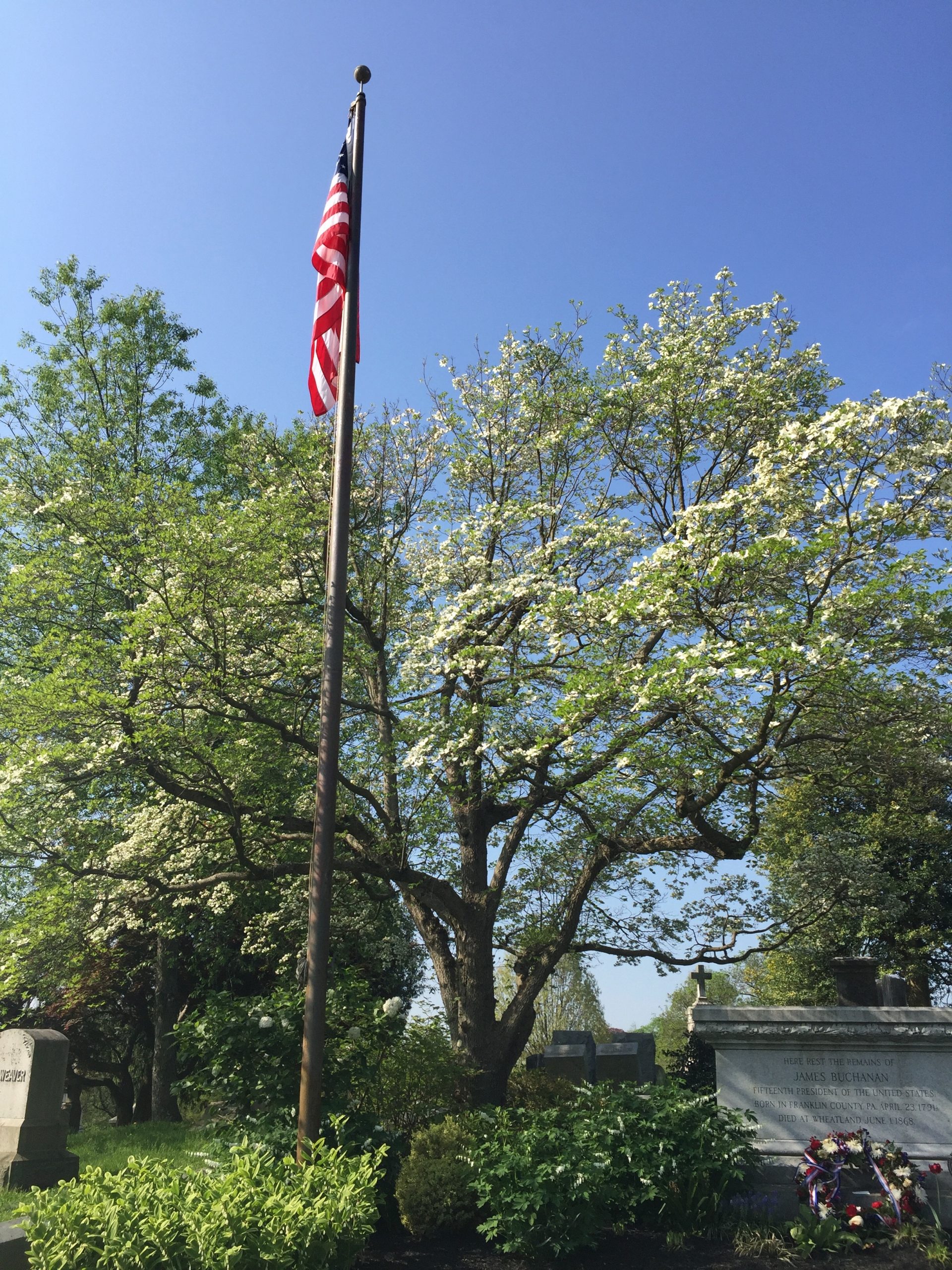
Pittsburgh, Pennsylvania
Soldiers and Sailors Memorial Hall and Museum – Located in the Oakland neighborhood of Pittsburgh, the Soldiers and Sailors Memorial Hall and Museum has a bronze memorial plaque honoring veterans of the War of 1812 in the courtyard area near the main entrance. https://soldiersandsailorshall.org/
Pittsburgh, Pennsylvania
Allegheny Arsenal – The Pennsylvania Historical and Museum Commission has placed an historical marker at the site of the former Allegheny Arsenal located in the Lawrenceville neighborhood of Pittsburgh. The marker reads: “Allegheny Arsenal – Designed by Benjamin H. Latrobe and constructed in 1814. The Arsenal was used as a military garrison in the manufacture and storing of supplies during the Civil War, Indian Wars, and Spanish-American War. Pennsylvania Historical and Museum Commission.”
The Allegheny Arsenal had strong associations with William Barclay Foster, father of noted American song-writer Stephen Foster. On April 18, 1814 Foster was appointed Quartermaster and Commissary of the U.S. Army. On April 29. 1814, Foster sold 30 acres of land that he owned in Lawrenceville (named for Lawrence of “Don’t Give Up The Ship” fame) to the U.S. government to establish an arsenal, that would become the Allegheny Arsenal, for $12,000. Foster provided crucial supplies to General William Henry Harrison and the North West Army (which included several Pennsylvania units, including the Pittsburgh Blues and Greensburg Rifles) during the fighting with the British-supported Native Americans in the North West Territories. Foster also provided supplies for General Andrew Jackson in New Orleans. The steamship “Enterprise” was dispatched from the Arsenal on December 15, 1814 and arrived in New Orleans on January 5, 1815, just days before the January 8, 1815 Battle of New Orleans.
The Arsenal’s historic marker does not mention the tragic munitions explosion that took place at the Arsenal during the Civil War.A contemporary newspaper provided the following report: “It was during the second year of the Civil War and during the second engagement of the battle of Antietam that Sept. 17, 1862, the War Department sent a hurry order to the superintendent of the Arsenal for a supply of ammunition. Col. Simonton, who was commandant at the arsenal, had just completed a new ballast driveway leading from the Butler St. entrance to the magazine house. A team hauling a wagonload of powder was the first vehicle to use the road. As it rumbled over the new road it is thought that fire struck by the horses’ shoes ignited some scrappings of powder that littered the driveway. Then followed one of the worst catastrophes in the history of the city. The driver of the wagon and a small boy who accompanied him were blown to atoms. The magazine house in which were employed 83 persons, mostly girls, was demolished and some of the bodies were never found. The force of the explosion wrecked houses, tore down ceilings and shattered windows in dwellings for miles around. The detonation was heard from the forks of the road to the Sharpsburg bridge and many persons thought they were in the midst of an earthquake. For more than a week the entire city was plunged in mourning.”
